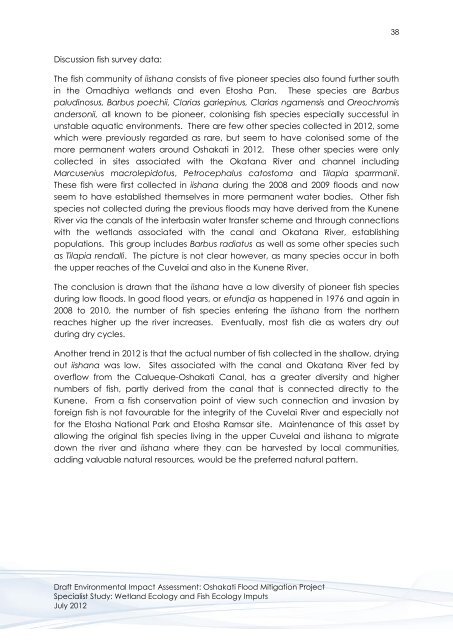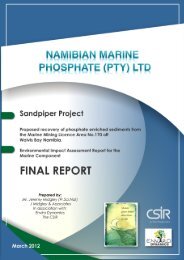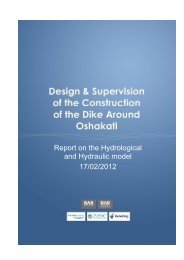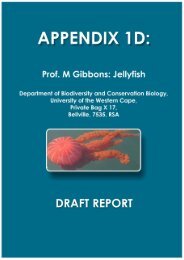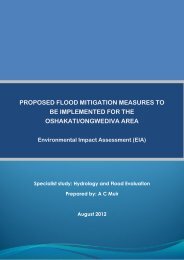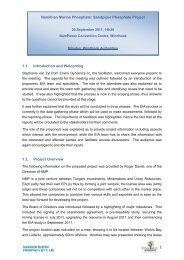Wetland & Fish Ecology - Enviro Dynamics Namibia
Wetland & Fish Ecology - Enviro Dynamics Namibia
Wetland & Fish Ecology - Enviro Dynamics Namibia
Create successful ePaper yourself
Turn your PDF publications into a flip-book with our unique Google optimized e-Paper software.
38<br />
Discussion fish survey data:<br />
The fish community of iishana consists of five pioneer species also found further south<br />
in the Omadhiya wetlands and even Etosha Pan. These species are Barbus<br />
paludinosus, Barbus poechii, Clarias gariepinus, Clarias ngamensis and Oreochromis<br />
andersonii, all known to be pioneer, colonising fish species especially successful in<br />
unstable aquatic environments. There are few other species collected in 2012, some<br />
which were previously regarded as rare, but seem to have colonised some of the<br />
more permanent waters around Oshakati in 2012. These other species were only<br />
collected in sites associated with the Okatana River and channel including<br />
Marcusenius macrolepidotus, Petrocephalus catostoma and Tilapia sparrmanii.<br />
These fish were first collected in iishana during the 2008 and 2009 floods and now<br />
seem to have established themselves in more permanent water bodies. Other fish<br />
species not collected during the previous floods may have derived from the Kunene<br />
River via the canals of the interbasin water transfer scheme and through connections<br />
with the wetlands associated with the canal and Okatana River, establishing<br />
populations. This group includes Barbus radiatus as well as some other species such<br />
as Tilapia rendalli. The picture is not clear however, as many species occur in both<br />
the upper reaches of the Cuvelai and also in the Kunene River.<br />
The conclusion is drawn that the iishana have a low diversity of pioneer fish species<br />
during low floods. In good flood years, or efundja as happened in 1976 and again in<br />
2008 to 2010, the number of fish species entering the iishana from the northern<br />
reaches higher up the river increases. Eventually, most fish die as waters dry out<br />
during dry cycles.<br />
Another trend in 2012 is that the actual number of fish collected in the shallow, drying<br />
out iishana was low. Sites associated with the canal and Okatana River fed by<br />
overflow from the Calueque-Oshakati Canal, has a greater diversity and higher<br />
numbers of fish, partly derived from the canal that is connected directly to the<br />
Kunene. From a fish conservation point of view such connection and invasion by<br />
foreign fish is not favourable for the integrity of the Cuvelai River and especially not<br />
for the Etosha National Park and Etosha Ramsar site. Maintenance of this asset by<br />
allowing the original fish species living in the upper Cuvelai and iishana to migrate<br />
down the river and iishana where they can be harvested by local communities,<br />
adding valuable natural resources, would be the preferred natural pattern.<br />
Draft <strong>Enviro</strong>nmental Impact Assessment: Oshakati Flood Mitigation Project<br />
Specialist Study: <strong>Wetland</strong> <strong>Ecology</strong> and <strong>Fish</strong> <strong>Ecology</strong> Imputs<br />
July 2012


